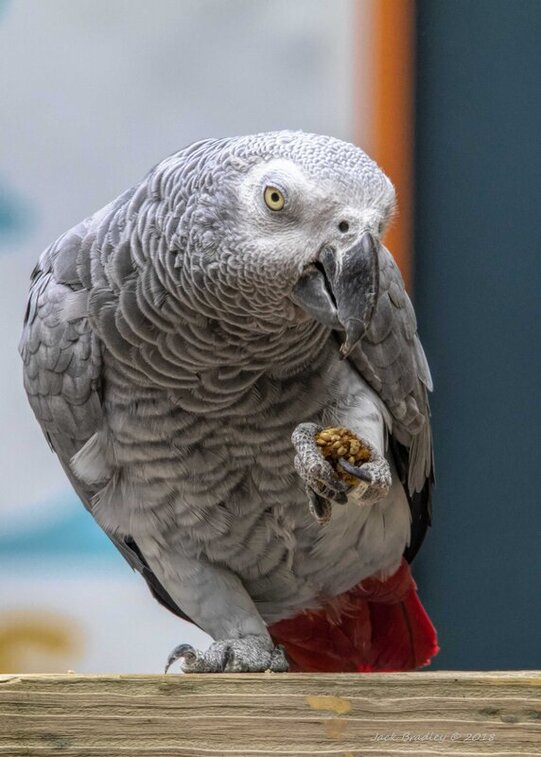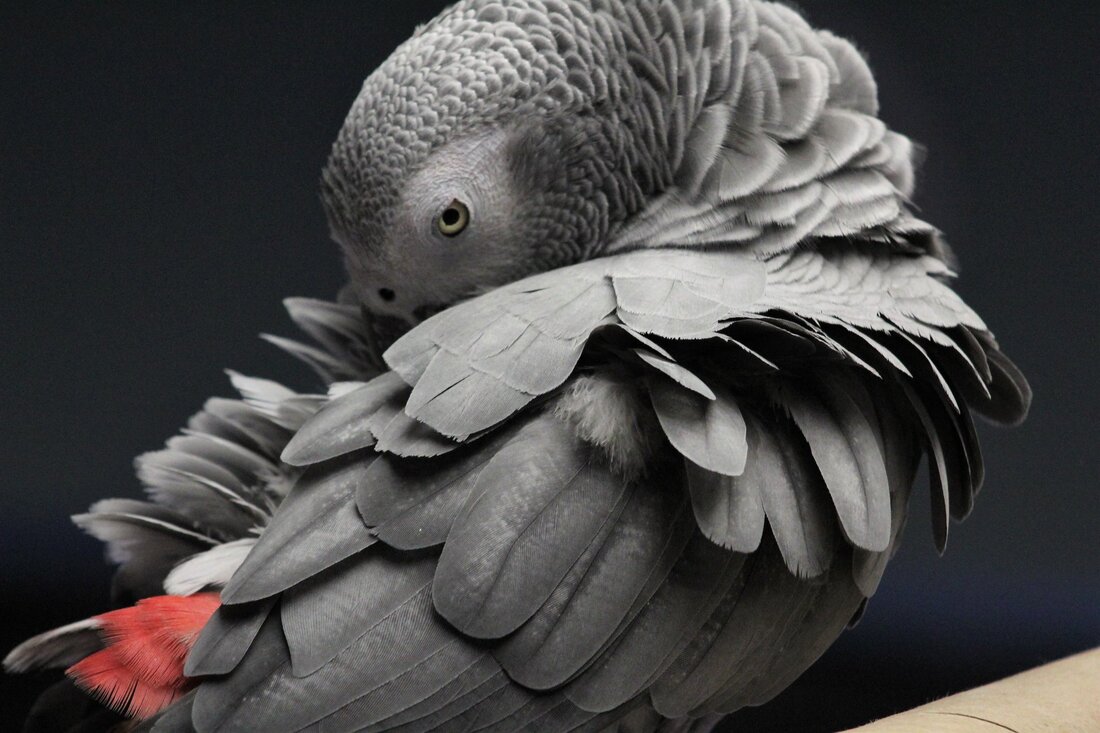|
|
African Grey Parrot (Psittacus erithacus)Physical Description: African Grey Parrots are one of the largest parrots in Africa. They are 13 inches long and have a wingspan between 18 and 20 inches. They weigh on average 15 ounces.
African Grey Parrots have a pale grey plumage, hence their name, with whitish edges to the feathers on the head and neck. Their wings are darker grey, while the legs and rear are a lighter grey or white. They have a bright red, but short, tail, which stands out against their grey feathers. Juvenile African Grey Parrots have dark grey or black eyes, grey-tinged under tail plumage and a darker red tip to the tail. Habitat: They inhabit lowland dense forests with high humidity. They are often found in areas of oil palms and commonly roost in Raphia Palms overhanging watercourses, or on offshore islands. African Grey Parrots make their nests in tree holes, sometimes choosing locations abandoned by other birds. The nest of the African Grey Parrot is generally a simple cavity, high in a tree. Range: African Grey Parrots are native to the forest belt of central and West Africa including the oceanic island of Príncipe. Diet: They are omnivores and will eat a variety of things such as nuts, fruits, leafy matter, insects, bark, and flowers. Lifespan: The African Grey Parrot lives 50-70 years on average with a generation length of 14.3 years. Social Structure: African Grey Parrots are very social birds. They often roost in large groups, and form large, noisy flocks, with the birds calling to each other in a variety of squawks, whistles, shrieks, and screams, both at rest and in flight. Although they are not migratory birds, in West Africa, the species makes seasonal movements out of the driest parts of the range in the dry season. Breeding occurs in loose colonies with each pair occupying its own tree. Individuals select mates carefully and have a lifelong monogamous bond. The breeding season varies by locality, but appears to coincide with the dry season. African Grey Parrots breed once or twice a year. Females lay 3 to 5 eggs, one each at intervals of 2 to 5 days. Females incubate the eggs while being fed entirely by the male. Incubation takes approximately thirty days and the young emerge from the nest at twelve weeks old. After the young emerge from the nest, both parents feed, raise, and protect them. Both parents care for their clutch of young until they reach independence at around 3 years. Status: Endangered (1) Other: African Grey Parrots have the ability to mimic a wide variety of sounds, and Zari, the zoo’s resident African Grey Parrot has been known to mimic the microwave, truck noises, and even human speech! References: https://www.iucnredlist.org/species/22724813/154428817 |
Connecticut’s Beardsley Zoo is dedicated to acquainting a diverse public to the delicate balance that exists between living things and their environment.
Connecticut's Beardsley Zoo is a 501(c)(3) not for profit owned and operated by the Connecticut Zoological Society.
Connecticut's Beardsley Zoo is a 501(c)(3) not for profit owned and operated by the Connecticut Zoological Society.
© 2022 Connecticut's Beardsley Zoo








